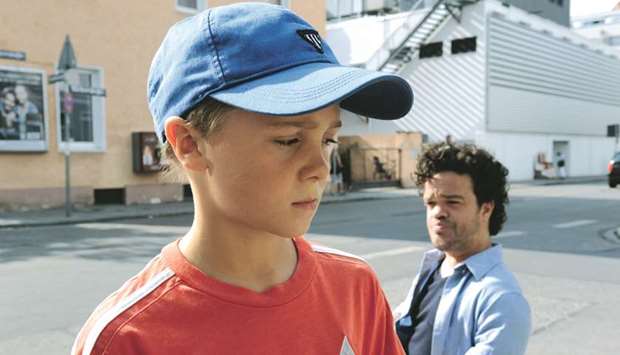From a heartwarming, animated portrait of an Afghan girl to the world’s first fully painted feature film, an eclectic selection of 12 thought-provoking feature films are vying for top honours at the 5th Ajyal Youth Film Festival, presented by the Doha Film Institute (DFI).
Set to inspire young audiences in the three jury categories of Mohaq, Hilal and Bader, this year’s rousing feature films curated from across the globe brilliantly embody Ajyal’s values of curiosity, empowerment, film, friendship and joy using creatively powerful narratives.
All Ajyal jurors watch and analyse feature and short films in their respective categories, awarding Best Film prizes in all categories.
Underlining DFI’s commitment to support quality film productions, seven films in competition are backed by the institute, reinforcing Qatar’s continued focus on promoting distinctive and compelling narratives of universal resonance.
“We have a fascinating range of feature films this year at Ajyal, selected for their ability to empower youth to explore their curiosity and find joy in new friendships through film,” DFI CEO Fatma al-Remaihi said.
Among the films in competition in the Mohaq category for jurors aged eight to 12 are At Eye Level directed by Joachim Dollhopf and Evi Goldbrunner (Germany); Everyday Heroes by Anne-Dauphine Julliand (France); Liyana by Aaron Kopp and Amanda Kopp (Swaziland/ Qatar/ US); and The Big Bad Fox and Other Tales by Benjamin Renner and Patrick Imbert (France). In the Hilal category, to be evaluated by jurors aged 13 to 17, are Step directed by Amanda Lipitz (US); the opening film of Ajyal, The Breadwinner by Nora Twomey(Canada/ Ireland/ Luxembourg); Walking Out by Alex Smith and Andrew J Smith (US); and Wallay by Berni Goldblat (France/ Burkina Faso/ Qatar).
Ajyal jurors aged 18 to 21 will evaluate four feature films in the Bader category. These are: Birds Like Us by Faruk Sabanovic (Bosnia and Herzegovina/ Turkey/ UK/ US/ Qatar); Disappearance by Ali Asgari (Iran/ Qatar); House in the Fields by Tala Hadid (Morocco/ Qatar); and Loving Vincent by Dorota Kobiela and Hugh Welchman (UK/ Poland), all co-financed by the DFI.
The Mohaq Selection features At Eye Level, a wonderful, at times humorous coming-of-age tale about acceptance and compassion of 10-year-old Michi, who is reunited with a father he has never known following the tragic death of his mother.
Everyday Heroes is a film simply about life, from a child’s eye view, which presents the lives of five children aged six to nine who are relegated to living for the moment. Supported by DFI, Liya na is the young heroine created by young orphans in Swaziland, where the scourge of Aids has ravaged the population, leaving hundreds of thousands of children alone to fend for themselves.
The Big Bad Fox and Other Tales, by celebrated animator Benjamin Renner – known to Doha audiences for 2012’s Ernest & Celestine, brings a combination of quick jokes, brilliantly timed silliness.
Under the the Hilal selection, Ajyal’s opening film, The Breadwinner, is an animated drama executive produced by Angelina Jolie.
Step documents the Baltimore Leadership School for Young Women, which is attempting to rectify the struggle that young girls endure to be successful in school despite their home life and the influence of their Baltimore community. In Walking Out, 14-year-old David and his estranged dad Cal are reunited for the first time in a year when David flies out to Montana for a visit.
In Wallay, Ady is sent by his father to the family village in Burkina Faso. This will mark the first time the youth has trodden the soil of his paternal ancestors, and he is eager to go.
The Bader Selection features Loving Vincent, which brings the paintings of Vincent van Gogh to life to tell his remarkable story.
Birds Like Us is about the lovely bird Hupu, her silent husband Hasan, their ever-helpful baby-bird Mi and the bird tyrant Kondor, who are forced on an epic journey to find their way home. Set high in the Atlas Mountains in Morocco, House in the Fields follows two teenage sisters as they discuss the possibilities and likelihoods of the future in an isolated rural Amazigh community that has changed little over the past millennium.

Eye Level is film about acceptance and compassion of 10-year-old Michi.
